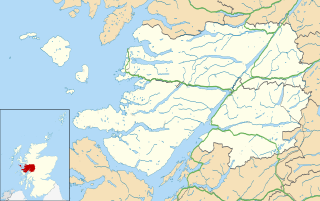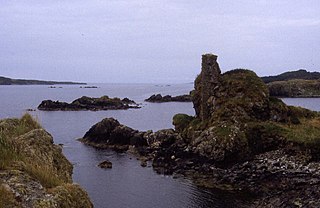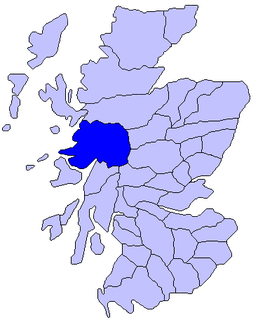Related Research Articles

North Uist is an island and community in the Outer Hebrides of Scotland.

South Uist is the second-largest island of the Outer Hebrides in Scotland. At the 2011 census, it had a usually resident population of 1,754: a decrease of 64 since 2001. The island, in common with the rest of the Hebrides, is one of the last remaining strongholds of the Gaelic language in Scotland. South Uist's inhabitants are known in Gaelic as Deasaich (Southerners). The population is about 90% Roman Catholic.

Benbecula is an island of the Outer Hebrides in the Atlantic Ocean off the west coast of Scotland. In the 2011 census, it had a resident population of 1,283 with a sizable percentage of Roman Catholics. It is in a zone administered by Comhairle nan Eilean Siar or the Western Isles Council. The island is about 12 kilometres from west to east and a similar distance from north to south. It lies between the islands of North Uist and South Uist and is connected to both by road causeways. Benbecula's main settlement and administrative centre is Balivanich.

Clan MacLeod is a Highland Scottish clan associated with the Isle of Skye. There are two main branches of the clan: the MacLeods of Harris and Dunvegan, whose chief is MacLeod of MacLeod, are known in Gaelic as Sìol Tormoid ; the Clan MacLeod of Lewis and Raasay, whose chief is MacLeod of The Lewes, are known in Gaelic as Sìol Torcaill. Both branches claim descent from Leòd, who lived in the 13th century.

The Lord of the Isles or King of the Isles (Scottish Gaelic: Triath nan Eilean or Rìgh Innse Gall) is a title of Scottish nobility with historical roots that go back beyond the Kingdom of Scotland. It began with Somerled in the 12th century and thereafter the title was held by a series of his descendants, the Norse Gaels rulers of the Isle of Man and Argyll and the islands of Scotland in the Middle Ages. They wielded sea-power with fleets of galleys (birlinns). Although they were, at times, nominal vassals of the Kings of Norway, Ireland, or Scotland, the island chiefs remained functionally independent for many centuries. Their territory included much of Argyll, the Isles of Arran, Bute, Islay, the Isle of Man, Hebrides, Knoydart, Ardnamurchan, and the Kintyre peninsula. At their height they were the greatest landowners and most powerful lords after the Kings of England and Scotland.

Clan Donald, also known as Clan MacDonald, is a Highland Scottish clan and one of the largest Scottish clans. The Lord Lyon King of Arms, who is the Scottish official with responsibility for regulating heraldry in that country, issuing new grants of coats of arms, and serving as the judge of the Court of the Lord Lyon, recognizes under Scottish law the High Chief of Clan Donald. Historically the chiefs of the Clan Donald held the title of Lord of the Isles until 1493 and two of those chiefs also held the title of Earl of Ross until 1476.

Arisaig is a village in Lochaber, Inverness-shire. It lies 7 miles south of Mallaig on the west coast of the Scottish Highlands, within the Rough Bounds. Arisaig is also the traditional name for part of the surrounding peninsula south of Loch Morar, extending east to Moidart. Etymologically, Arisaig means "safe bay". It lies in the Scottish council area of Highland and has a population of about 300.

Morar is a small village on the west coast of Scotland, 3 miles (5 km) south of Mallaig. The name Morar is also applied to the northern part of the peninsula containing the village, though North Morar is more usual. The coastline of the area forms part of the Morar, Moidart and Ardnamurchan National Scenic Area, one of 40 such areas in Scotland, which are defined so as to identify areas of exceptional scenery and to ensure its protection by restricting certain forms of development.
Moidart is part of the remote and isolated area of Scotland, west of Fort William, known as the Rough Bounds. Moidart itself is almost surrounded by bodies of water. Loch Shiel cuts off the eastern boundary of the district and continues along part of the southern edge. The remainder of the southern edge is cut off by Loch Moidart. The north is cut off by Loch Morar and Loch Ailort.

Clan MacKinnon or Clan Fingon is a Highland Scottish clan associated with the islands of Mull and Skye, in the Inner Hebrides.

Clan MacDonald of Keppoch, also known as Clan Ranald of Lochaber, is a Scottish clan and a branch of Clan Donald. The Clan MacDonald of Keppoch has a chief that is recognized by the Lord Lyon King of Arms and the Court of the Lord Lyon.

Clan Macfie is a Highlands Scottish Clan.

Dunyvaig Castle, is located on the south side of Islay, in Argyll, Scotland, on the shore of Lagavulin Bay, 4 kilometres from Port Ellen. The castle was once a naval base of the Lord of the Isles, chiefs of Clan Donald. It was held by the chiefs of the Clan MacDonald of Dunnyveg.

The Battle of Drumchatt was a Scottish clan battle that took place in 1497. The Clan Mackenzie and possibly the Clan Munro defeated the Clan MacDonald of Lochalsh at Drumchatt (Druimchat) or "the Cat's Back", a ridge to the southeast of Strathpeffer.
Garmoran is an area of western Scotland. It lies at the south-western edge of the present Highland Region. It includes Knoydart, Morar, Moidart, Ardnamurchan, and the Small Isles.

The Battle of Lochaber was a battle fought in 1429, in the Scottish Highlands, between the forces of Alexander of Islay, Earl of Ross, 3rd Lord of the Isles and chief of Clan Donald against the Royalist army of King James I of Scotland.

A slogan is used in Scottish heraldry as a heraldic motto or a secondary motto. It usually appears above the crest on a coat of arms, though sometimes it appears as a secondary motto beneath the shield. The word slogan dates from 1513. It is a variant of the earlier slogorn, which was an Anglicisation of the Scottish Gaelic sluagh-ghairm.
The Rough Bounds, in the Scottish Highlands, is the area of West Inverness-shire bounded by Loch Hourn, Loch Shiel, and Loch Moidart, consisting of the districts of Knoydart, North Morar, Arisaig and Moidart. The area is famous for its wildness and inaccessibility and remains very sparsely populated.
Clan MacEacharn were a group of families who occupied lands in the Kintyre, Islay, and Morvern regions of Scotland as well as island areas such as Mull and Tiree. They are traditionally known as one of the oldest Western Highland family names. The history of the Kintyre branch and its sub branches are well known, however the histories of the Islay and Morvern branches and the island branches is obscure.
Amy of Garmoran also known as Amie MacRuari and Euphemia was a 14th-century Scottish noblewoman who was the sister of Raghnall mac Ruaidhri, Lord of Garmoran and the spouse of John of Islay. After her marriage had produced three sons, the ambitious John of Islay divorced her in order to remarry and cement his links with the House of Stewart. She then retired to her estates in the Highlands and Islands, and completed various ecclesiastical and other building projects. Her son Ranald was the progenitor of Clanranald.
References
- Adam, Frank (1934), Innes, Thomas of Learny (ed.), The clans, septs, and regiments of the Scottish Highlands (8th, revised by Sir Thomas Innes of Learney ed.), Edinburgh: Johnston & Bacon, ISBN 978-0-7179-4500-9 , retrieved 11 May 2012
- Gregory, Donald (1836), History of the Western Highlands and Isles of Scotland, from A.D. 1493 to A.D. 1625, with a brief introductory sketch, from A.D. 80 to A.D. 1493, Edinburgh: W. Tait , retrieved 11 May 2012